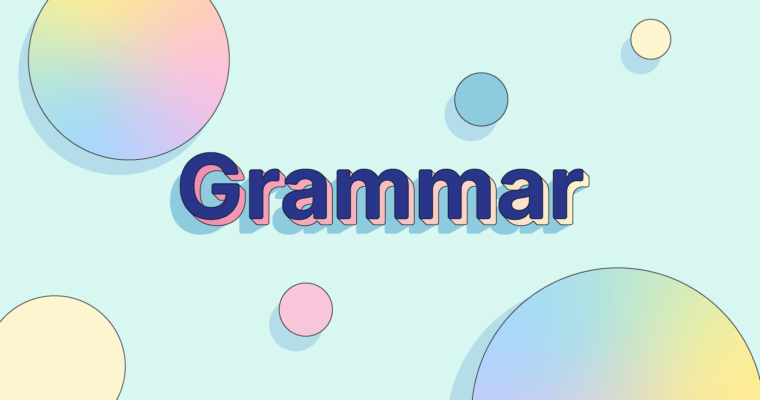
A topic sentence, usually the first sentence in a paragraph, introduces the main idea of that paragraph and sets its tone. A topic sentence is especially important in essays, where topics change from paragraph to paragraph. This makes knowing how to write a topic sentence crucial for any student or writer.
Of course, writing a topic sentence yourself isn’t always easy. How do you start one? What details should you include—or not include? This quick guide explains everything you need about how to write a topic sentence, with plenty of examples sprinkled throughout.
Table of contents
Purpose of a topic sentence
On the surface, the purpose of a topic sentence is merely to present the main idea of the paragraph so that the reader knows what to expect. However, the best topic sentences do a little more.
First, topic sentences string together paragraphs in a way that progresses nicely and facilitates reading. Moving from one paragraph to another can feel jarring and abrupt, so topic sentences help maintain the flow of the overall piece of writing—and readers’ focus as a result.
Moreover, topic sentences also “preview” what the reader can expect from the rest of the paragraph. Based on the topic sentence, the reader can figure out if the paragraph will contain a list, statistical data, anecdotal evidence, persuasive opinions, a narrative, or something else.
If the same paragraph covers opposing points of view, you may need two or more topic sentences to show the reader the main idea has changed. The most common example of this is in paragraphs that compare or contrast positions, in which case each perspective needs its own introduction.
For these types of paragraphs, you could introduce your first idea with the opening topic sentence, then provide one or two sentences of support, and afterward introduce a second topic sentence known as a pivot (explained below). The pivot topic sentence introduces the paragraph’s second main idea or contradicting point of view, also followed by one or two sentences of support.
Different types of essays use topic sentences differently as well. Argumentative essays and persuasive essays may have more opinionated topic sentences, whereas those in expository essays would stick to facts. Compare-and-contrast essays, which alternate between opposite sides of a topic, rely on topic sentences to ease those transitions, on top of everything else.
This is true not just for different essay types, but also different paragraph types as well. Even within the same essay, the author may switch up paragraph styles between expository, descriptive, persuasive, and narrative—in that case, each requires a slightly different style of topic sentence.
Topic sentence vs. thesis statement
If you’re also learning about how to write a thesis paper, you may get topic sentences confused with thesis statements. Basically, topic sentences introduce the main idea of a paragraph, whereas thesis statements introduce the main idea of the entire paper or essay. Both serve the same function—preparing the reader with a preview—but in different capacities.
Topic sentence types and examples
Before you learn how to write a topic sentence, it helps to see what different forms they can take. Here we explain the different types, along with some topic sentence examples.
Simple statement
This is the most basic type of topic sentence, in which the author makes a general statement that the rest of the paragraph elaborates on.
New research indicates a link between a person’s cognitive style and the type of content they post on Twitter.
Those weeks at the farmhouse gave me some of the best memories of my life.
Command
To break up the monotony of using the same sentence types over and over again, you can phrase your topic sentences as direct commands or requests to your readers.
Take a look at the data to see what I mean.
Now let’s consider the alternative.
Question (interrogative)
Opening a paragraph with a question is a great way to get the reader interested and involved, as long as you stay on topic.
What would you do if you became a millionaire overnight?
How many countries are prepared for a change in sea levels?
Complex
If you have a complicated topic that covers multiple ideas, you may want to use a complex topic sentence. Even though these would still qualify as “statements,” they address more than one main idea.
Although the majority of people still believe in alpha wolf theory, the truth is that wolf packs in nature don’t necessarily have a designated leader.
As appealing as Ayn Rand’s ideas may seem to some, the logical and evidential support just isn’t there.
Purely transitional
While all topic sentences have to deal with transitions to a degree, in some cases they can be purely transitional. These work best in circumstances when the topic changes drastically by drawing attention to the switch.
However, not everyone agrees.
This was just the way the world was, and perhaps always would have been, if a random apple had not fallen onto the head of a young Isaac Newton.
Pivot
Similar to purely transitional sentences, pivot sentences are embedded within a paragraph—not at the beginning—to indicate a shift from one topic to another. They often include conjunctive adverbs such as however, meanwhile, furthermore, etc.
By contrast, Nikola Tesla saw alternating current as a better solution.
However, the Bears’ winning streak could not last forever.
How to write a good topic sentence
Topic sentences follow many of the usual guidelines for writing sentences, but there are a few particular tips just for them.
1 Get the reader interested with a hook
Good topic sentences usually include a “hook,” or something that makes people want to read more. While some are more common than others, you can hook your readers in a variety of ways:
- Shocking revelations, like surprising facts or impressive data
Despite the record-breaking turnouts, only one percent of the teams managed to complete the first challenge.
- Mystery, which is especially useful with interrogative topic sentences
What finally changed the senator’s mind?
- Emotion, or encouraging the reader to form a personal connection with the topic
Living with a dog has its difficulties, but not as many as living without one.
2 Find a middle ground between general and specific
One of the biggest challenges in writing topic sentences is learning how much to include and how much to save for the rest of the paragraph. In short, you want to say just enough so that the reader knows what the paragraph is about, and ideally gets interested. Everything else should wait until the supporting sentences.
For example, let’s look at a topic sentence for a paragraph about an apartment, from Meghan Daum’s essay “My Misspent Youth”:
There was nothing particularly fancy about the place.
The remaining paragraph is full of specific details about the apartment, but Daum doesn’t mention them in the opening sentence. Likewise, she doesn’t ignore the description altogether, giving a glimpse to the reader to pique their curiosity and prepare them for a paragraph describing the place.
3 Be clear above all
The most important part of topic sentences is clarity. Even if you get the reader excited and eager to read more, it won’t matter if they don’t know what they’re reading about.
This may be easy enough when just writing a single topic sentence, but it gets harder when writing sentence after sentence for hours on end. After a while, you get bogged down by your own thoughts and concerns about the essay and may momentarily forget about the reader’s perspective.
If that writing process sounds familiar, try Grammarly. Our product not only catches typos and grammar mistakes, but also points out mismatched tone, weak word choice, and even assesses clarity.
You have enough things to worry about when writing an essay; don’t let the high-priority concerns like clarity fall through the cracks. Try Grammarly for free to see for yourself.


